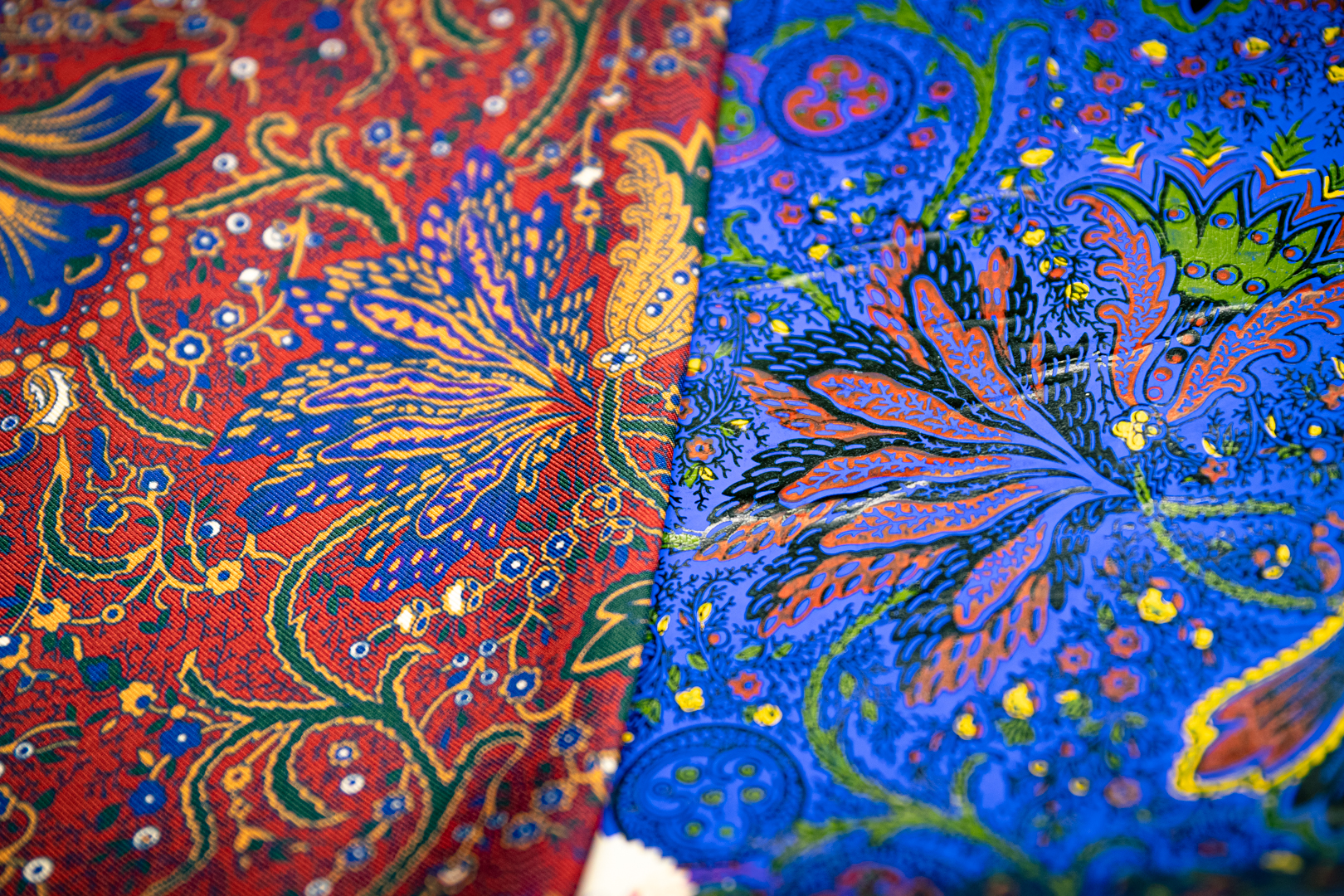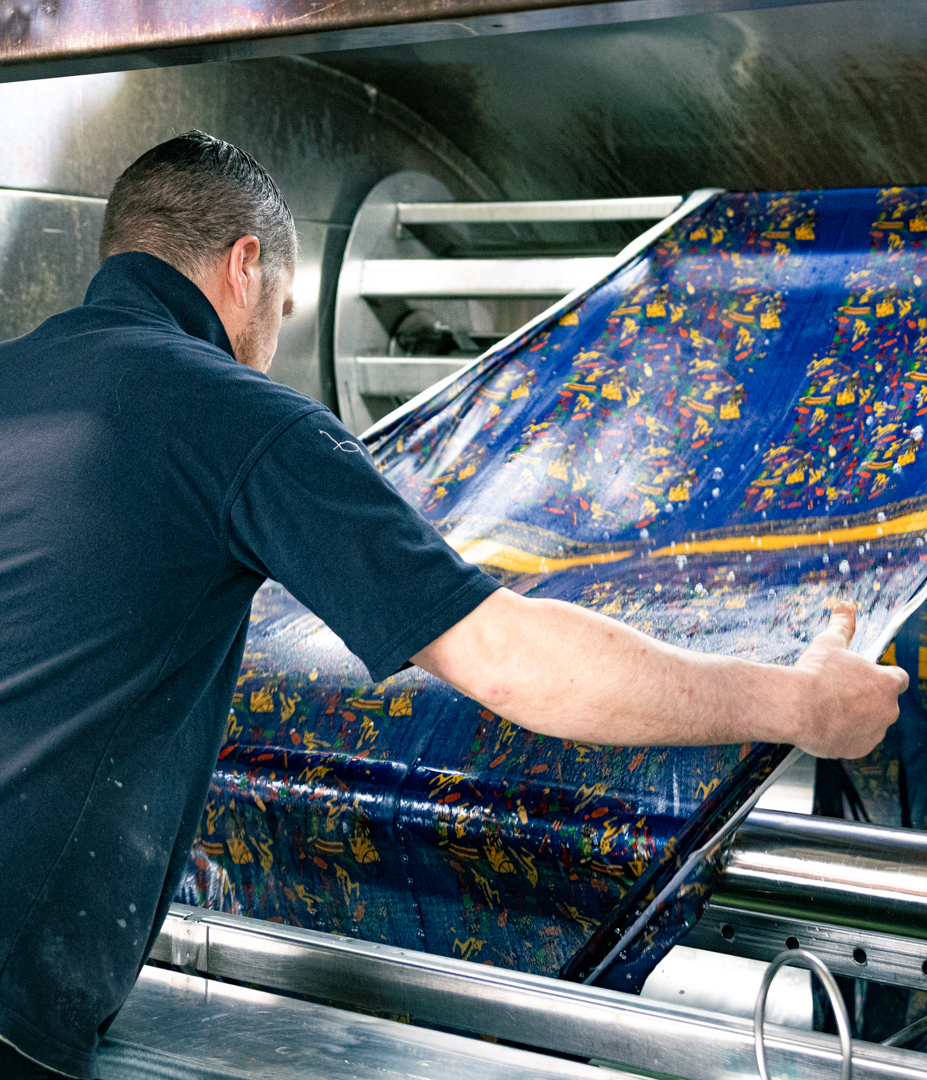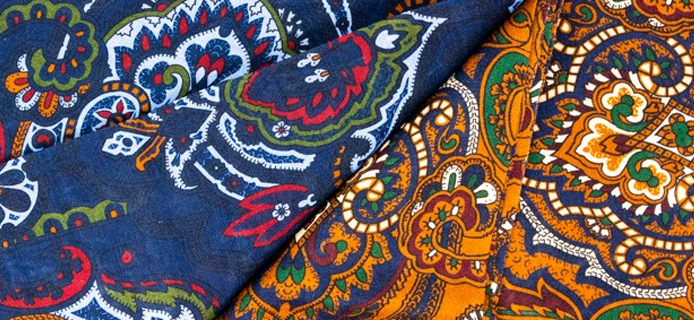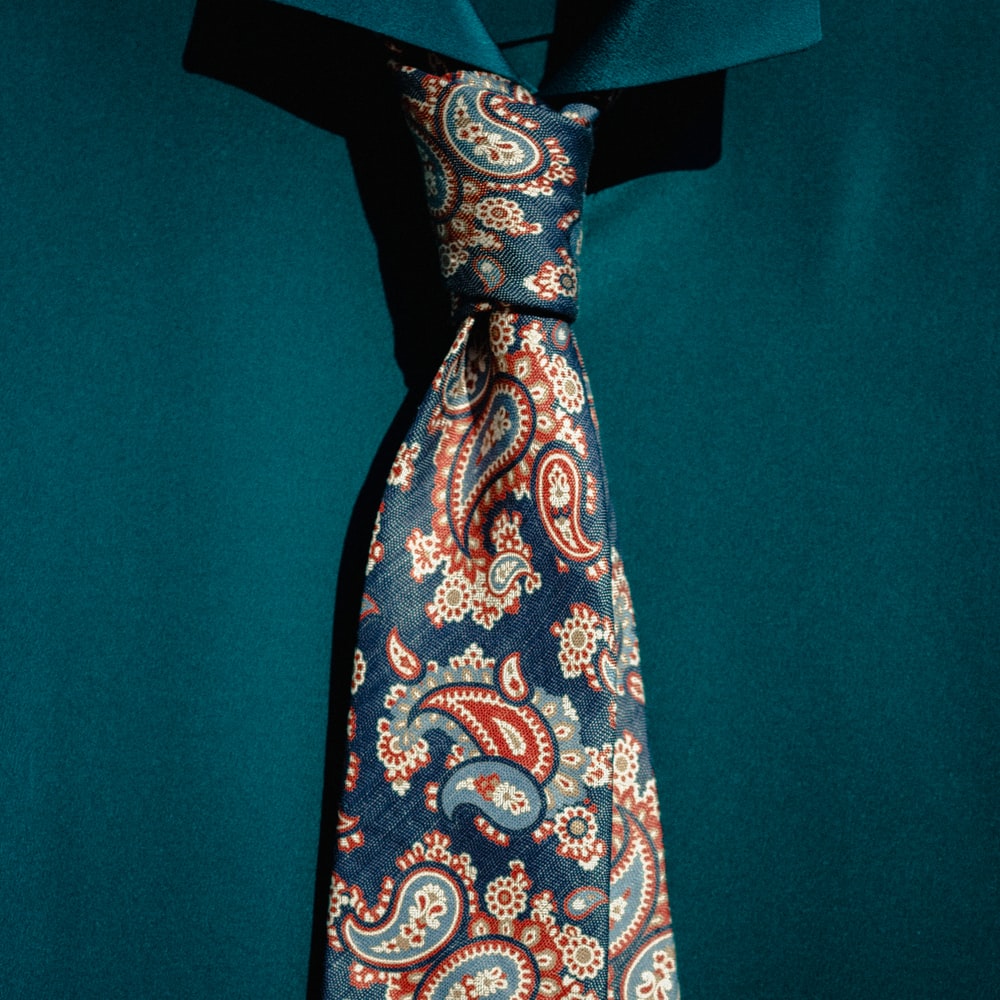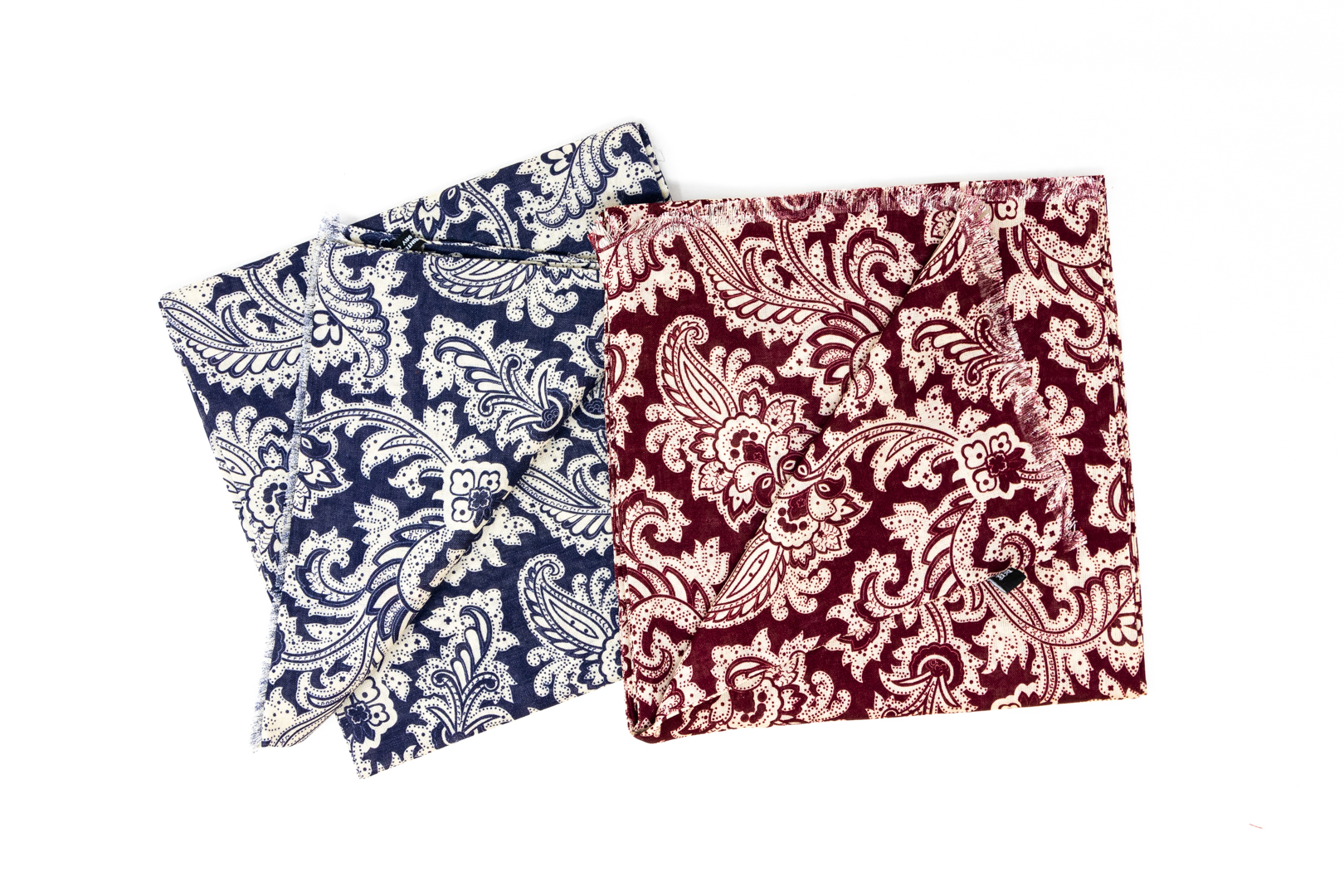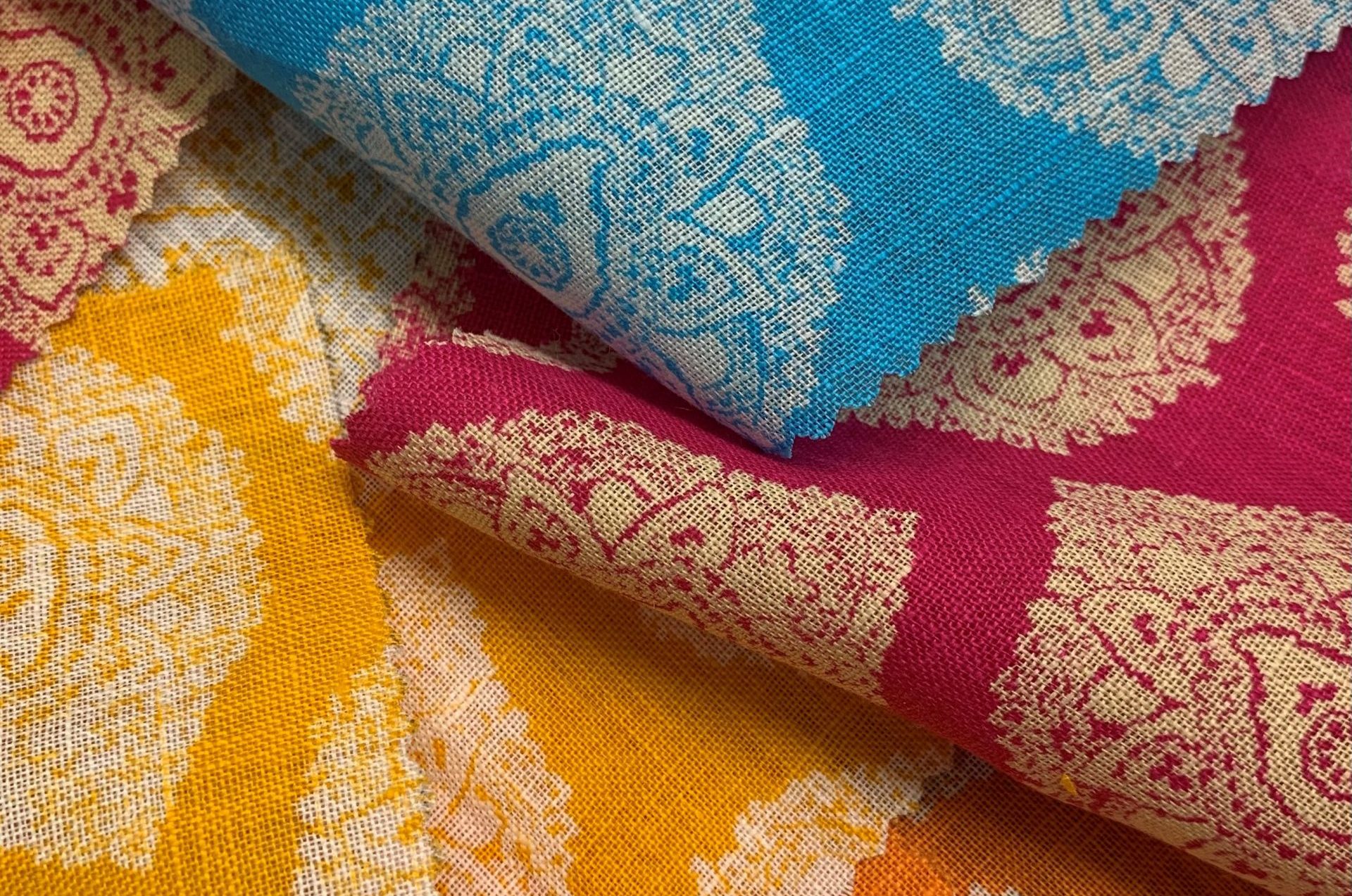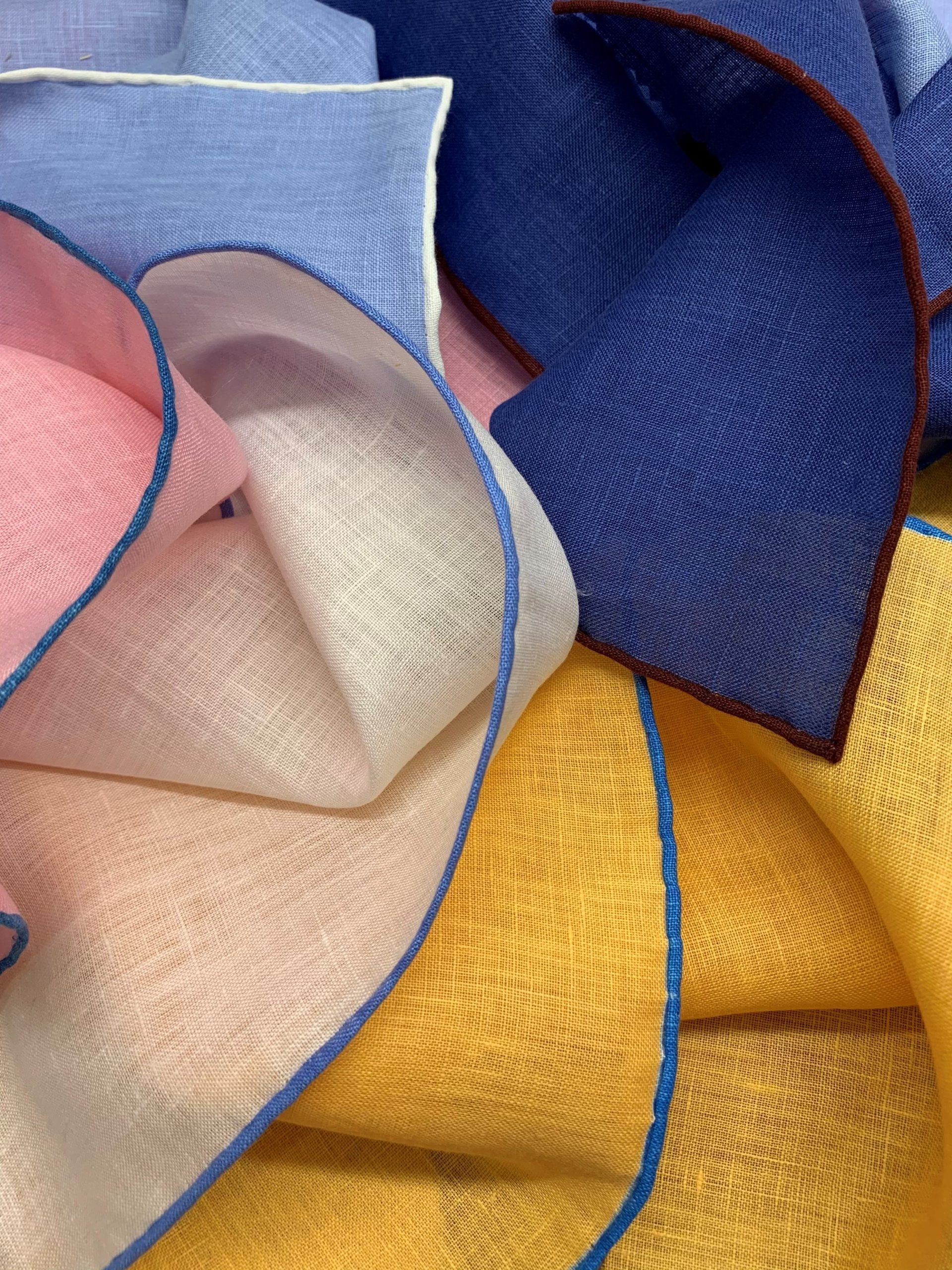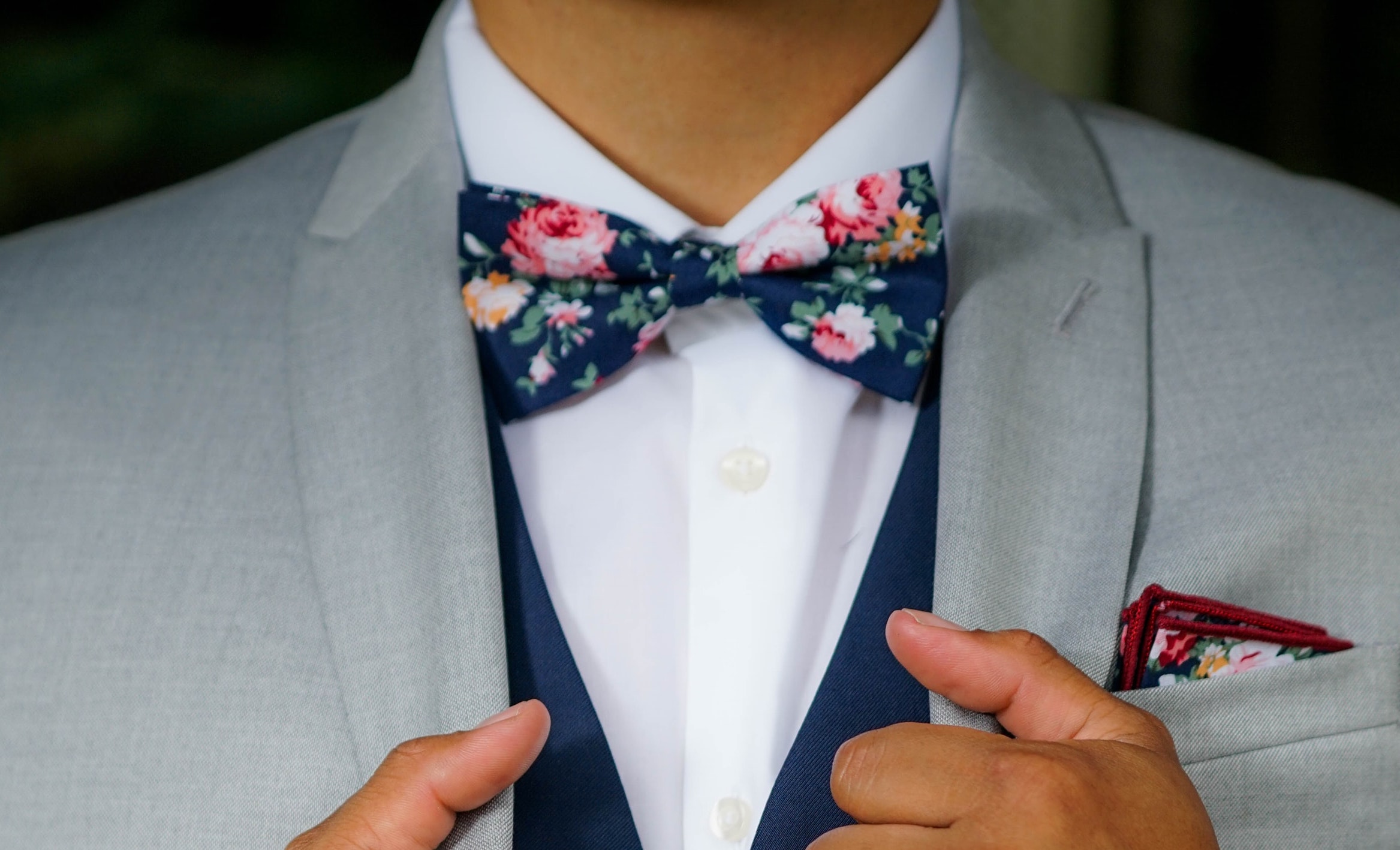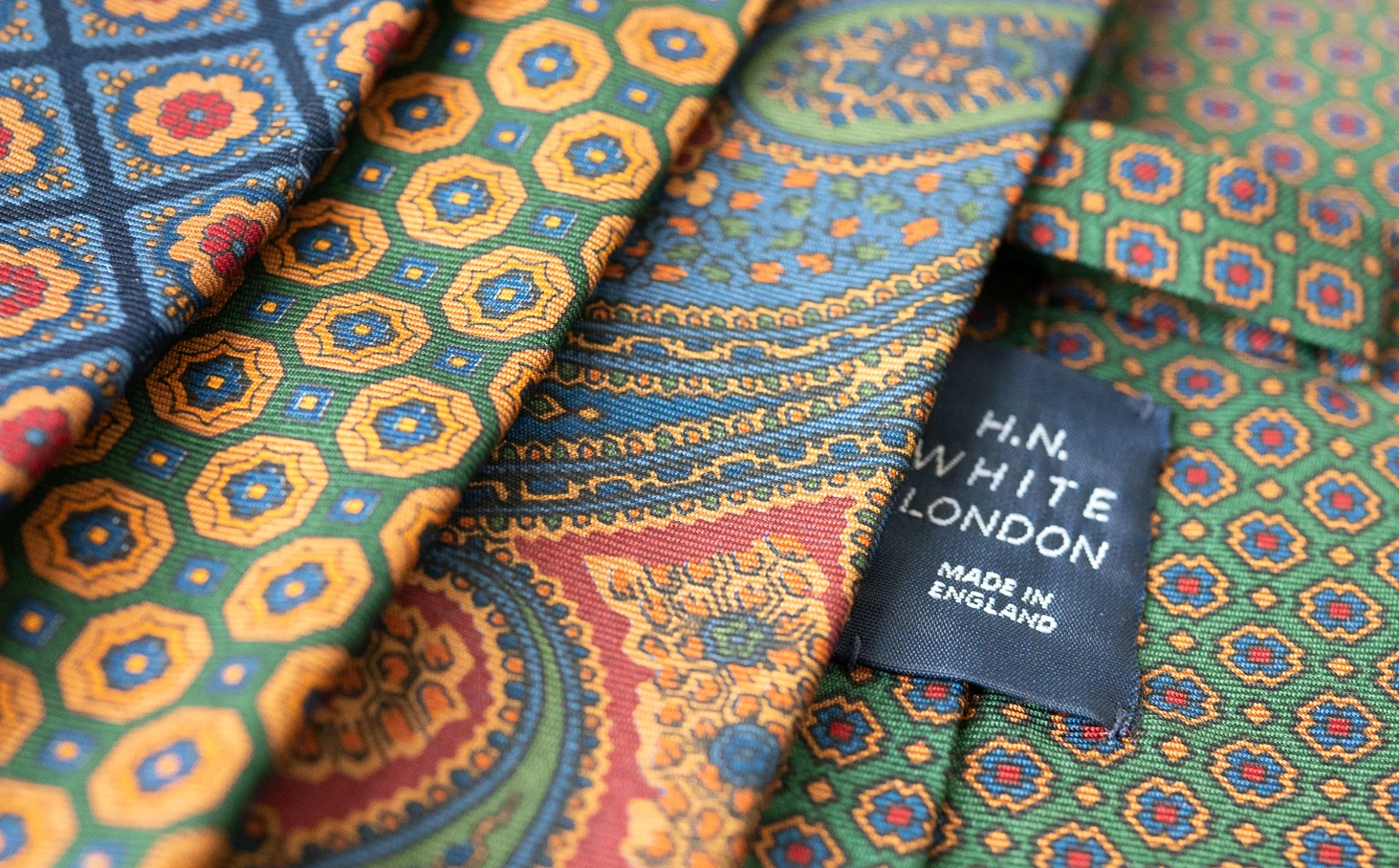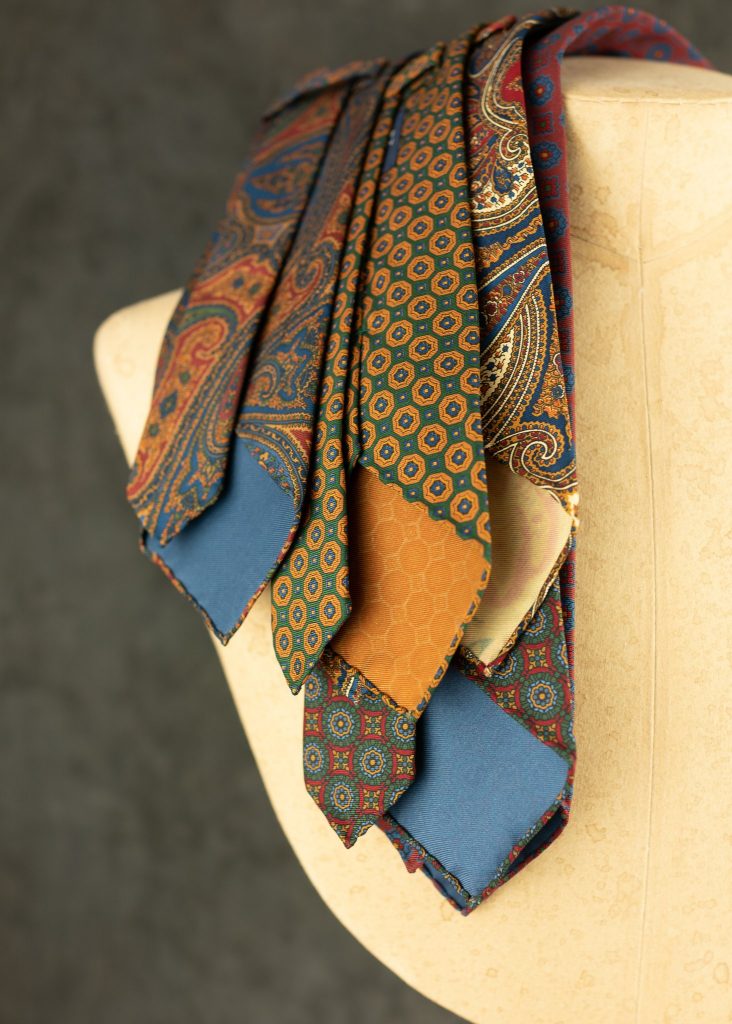When it comes to printing on silk, we know what we’re talking about. Adamley has been silk screen printing for over 50 years, and continues to use the traditional technique in the production of bespoke, luxury fabrics.
Screen printing is an ancient art form, and one that requires great precision and skill. For professional results, this artisanal method of printing is usually better left to the experts – factories and workshops that are well equipped with specialised equipment and knowledge.
However, that’s not to say that with the right tools, you can’t try screen printing at home.
As one of very few silk manufacturers in the UK continuing to practice silk screen printing, we feel it is our duty to keep the technique alive. The results generated from silk screen printing simply can’t be replicated through digital printing or alternatives – and we don’t want that to get lost in a world of modern technology.
In this blog, we’ll talk through how screen printing works, and what’s involved in the process so you can try your hand at it at home.
What is silk screen printing?
Silk screen printing is a stencilling method; a process in which a design is transferred onto fabric using ink and a mesh screen. The technique is sometimes referred to as ‘silk screening’ or other similar variations, but the general process and outcome remains similar.
Traditionally, the screens used were crafted from silk threads – hence, silk in the name. This is not as common nowadays, but alternative materials still yield the same results.
The basic technique of screen printing is most commonly used on fabrics and paper, but with the suitable equipment, it can also work on hard surfaces such as metal, wood, plastic and even glass. Here at Adamley, screen printing on silk, wool, linen, and other fabric blends is our speciality.
For each design, stencils are made from scratch; engraved with the design to be printed. The stencils are used to push the ink through – thus, transferring the colour on to the fabric.
Once a stencil has been made, it can be used to replicate the design on a number of different garments or fabrics. This makes screen printing a much more cost-effective and efficient printing process for multiple replica prints.
Screen printing is typically the preferred choice for bold and vivid designs, due to the vibrant colour output that the inks provide, especially on dark coloured fabrics. The nature of screen printing means that the layers of ink sit on top of the fabric, which can be used to create raised, texturised designs – something that can’t be replicated with digital printing.
What do you need for silk screen printing?
Screen printing at home can be a fun and exciting way of expanding your artistic abilities, and experimenting with different designs and colours.
It’s a labour-intensive and skillful process which requires a lot of materials and patience. We recommend starting small whilst you grasp the technique, before moving on to bigger and better things.
To screen print at home, here’s what you’ll need:
- A table – Large enough to lay your fabric and with plenty of room to print.
- Inks – Plastisols and water-based inks are the best choice for at-home screen printing. We’d recommend purchasing basic neutral colours and an ink mixing pack so that you can create multiple colours.
- Squeegee – This is the device that will help you to push the ink through the screen. If you’re printing on fabric, opt for a rubber squeegee. For paper, choose a harder and more robust squeegee.
- Screen – Many arts & crafts shops sell pre-made screens, but you can also make a silk screen at home with just a few materials.
- Fabric – Of your choice, to be printed on.
- Steam – To cure and seal the ink.
- Washing machine – To be used on a cold wash / low temperature setting.
Professional screen printing, of course, uses much more advanced tools and materials. However, for the novice printer, getting your hands on this simple list of set-up equipment will have you well on your way to printing your own original designs in no time.
Step by step silk screen printing
Before going ahead and getting started with screen printing, you’ll need to know a little more about the process and how it works. Here’s a general overview of how we screen print on silk at Adamley…
The method begins with creating the stencil, by first engraving the design onto high precision mesh. Each different colour layer needs to be separated on the digital design, in order to create individual stencils for each layer. This means that depending on the number of colours needed, there can be anywhere upwards of 10 mesh screens produced for any one design.
With the length of fabric lay flat on a screen printing table, the first screen is carefully positioned on top. Stencil firmly in place, the first layer of colour is then pushed through the fine mesh screen, pressing the ink onto the fabric and imprinting the design. For multicoloured prints, this process is repeated for each layer using different stencils.
Once all printing is complete, the fabric is then cured by passing it through a steamer to seal the colours in place and ensure a colourfast finish. The print is then checked and the fabric is washed & finished to soften the fibres and ensure a flawless finished product.
Screen printing on silk at Adamley
Looking for a professional silk screen printer? Adamley is one of the UK’s leading silk printers, specialising in creating bespoke printed fabrics & luxury accessories, supplying to the high-end fashion market and manufacturers nationwide.
Here at Adamley, we produce all of our colours and dyes in house to ensure the most bold and vibrant output. This also enables us to match any bespoke colour palettes to guarantee that the final print reflects the submitted design perfectly.
Equipped with six screen printing tables and an experienced team of printers, we have the facilities to reproduce any design, on any fabric, in any quantity.
Find out more about our silk screen printing services, or make an enquiry.


